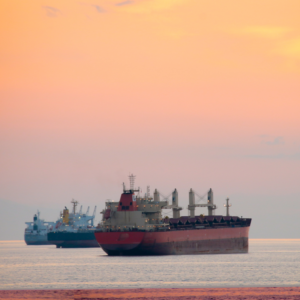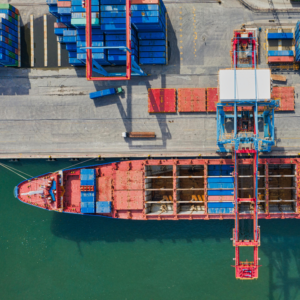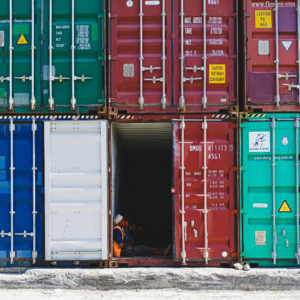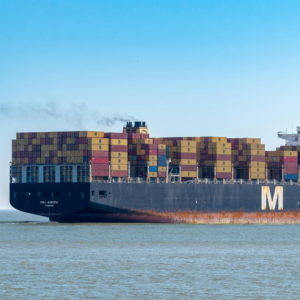
What is Freight Shipping?
Freight shipping refers to the transportation of large quantities of goods via air, ocean, rail, or road. Unlike small parcel shipping, freight shipments are typically over 150 lbs. and often require specialized logistics solutions.
How Does Freight Shipping Work?
- Choose a Transport Mode: Based on speed, cost, and cargo type, you can select air, ocean, rail, or road freight.
- Get a Freight Quote – Compare freight rates from different carriers to optimize costs.
- Prepare Shipping Documents – Ensure all customs and compliance paperwork is in order.
- Track Your Shipment – Use real-time tracking tools to monitor delivery status.
- Receive and Inspect Cargo – Check for damages and confirm receipt of delivery.
Freight Shipping Modes Explained
- Road Freight (Truck Shipping)
- Best for domestic and short-haul shipments.
- Includes Less-Than-Truckload (LTL) and Full Truckload (FTL) shipping.
- Flexible delivery schedules and affordable for regional transport.
- Rail Freight
- Cost-effective for heavy or bulk cargo over long distances.
- Ideal for agricultural, automotive, and industrial goods.
- Lower carbon footprint than road transport.
- Ocean Freight (Sea Shipping)
- Best for large-volume international shipments.
- Options include Full Container Load (FCL) and Less Than Container Load (LCL).
- Most economical but slower than air freight.
- Air Freight
- Fastest shipping mode for urgent, high-value goods.
- Used by pharmaceuticals, electronics, and perishable goods industries.
- Higher cost but ensures quick global delivery.

Several factors influence freight shipping costs:
- Distance & Destination
- Longer shipping distances increase costs.
- International shipping requires customs fees and duties.
- Freight Weight & Dimensions
- Larger and heavier shipments cost more due to space limitations.
- Mode of Transport
- Air freight is the most expensive.
- Ocean freight is the cheapest but slowest.
- LTL shipping is cost-efficient for small loads.
- Fuel Prices & Carrier Surcharges
- Fluctuating fuel costs impact freight rates.
- Peak season and demand can raise prices.
Key Freight Shipping Terms to Know
- Freight Forwarder
A logistics provider that arranges cargo transportation on behalf of shippers.
- Bill of Lading (BOL)
A legal document detailing the shipment’s contents and ownership.
- Freight Class
A rating that determines shipping costs based on size, weight, and handling requirements.
- Incoterms
International shipping terms define buyer-seller responsibilities.

- Optimize Freight Management with Digital Tools
Utilize Transportation Management Systems (TMS) to automate shipping processes, track cargo, and minimize costs.
- Compare Freight Quotes
- Get multiple quotes from different carriers.
- Choose the best balance between speed, cost, and reliability.
- Ensure Proper Packaging
- Use palletized freight for safety.
- Secure fragile items with proper cushioning.
- Plan for Customs & Compliance
- Ensure all customs clearance documents are in order.
- Work with a freight forwarder to handle complex regulations.

- What is the cheapest way to ship freight?
Ocean freight is generally the most cost-effective option for international shipping, while less-than-truckload (LTL) shipping is more cost-effective for domestic freight.
- What is the difference between LTL and FTL shipping?
LTL (Less-Than-Truckload) refers to smaller shipments that share truck space with other cargo, while FTL (Full Truckload) refers to larger shipments that occupy an entire truck.
- How do I calculate freight shipping costs?
Freight cost depends on weight, dimensions, distance, transport mode, and additional services (e.g., liftgate delivery).
- How long does freight shipping take?
- Air freight: 1–5 days.
- Ocean freight: 20–45 days.
- Road freight: 2–10 days.
- Do I need insurance for my freight shipment?
Yes, freight insurance protects against loss, theft, or damage during transit.
Freight shipping is essential for businesses managing global supply chains. Selecting the appropriate transport mode, optimizing costs, and leveraging technology for logistics management can significantly enhance efficiency. Whether you need LTL shipping, ocean freight, or air freight, understanding freight transportation will help streamline your operations.


Leave A Comment
You must be logged in to post a comment.